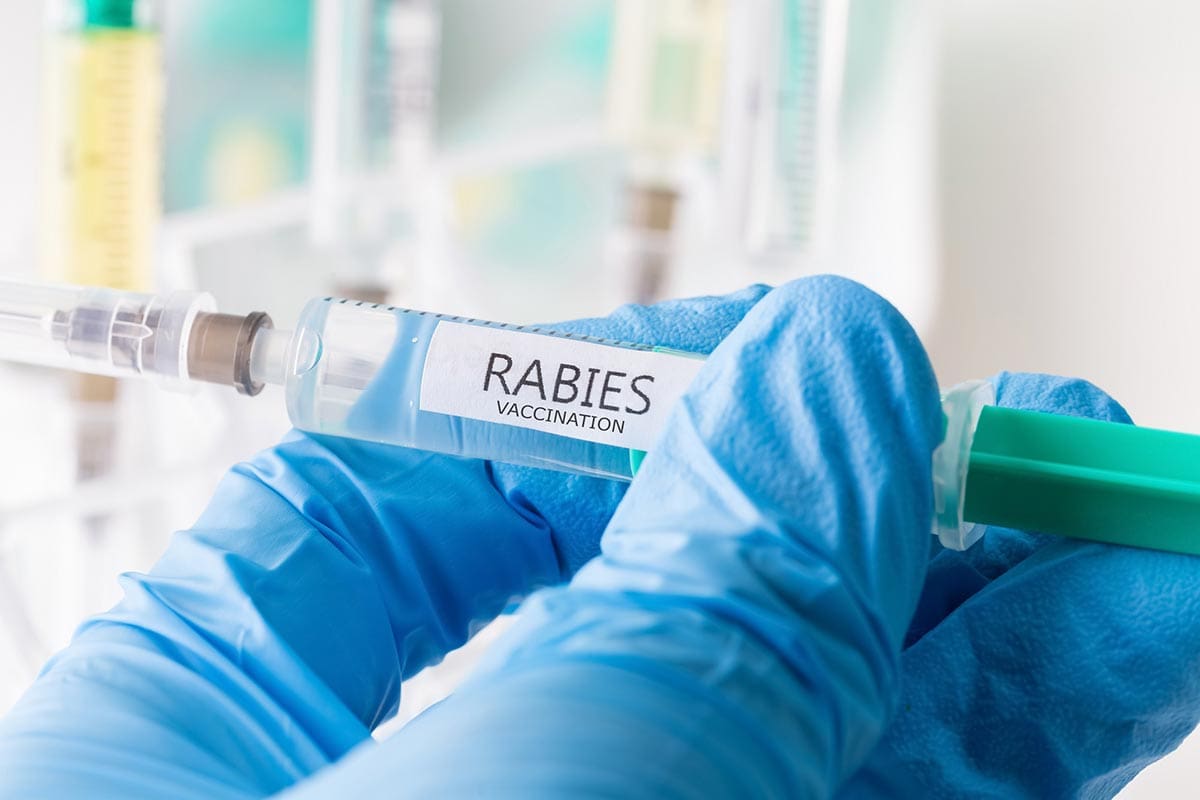Did you know that rabies has an approximate 100% mortality rate? If untreated and unvaccinated, someone with rabies will die with no exceptions.
Although many people think that rabies is only preventable in pets, it's actually very easy to prevent in humans too. And with such a high lethality, it's important to take every precaution.
The rabies vaccine for humans can be taken either before or after exposure, giving you comprehensive protection from every strain of the disease. To get the full picture about rabies and the vaccine for humans, read on!
Rabies Overview
Rabies is a zoonotic disease meaning it's passed from animals to humans. Some other examples of zoonotic diseases are West Nile Virus, plague, and coronavirus. Rabies is found anywhere there are animals, but mostly in Asia, Africa, and South America.
After exposure, symptoms of rabies emerge within 2 to 8 weeks. Some strains of rabies can take up to a year before symptoms are apparent, but most cases are clear within about a month.
Rabies is a virus that attacks the brain and spinal cord. As soon as symptoms are clear, the virus has usually progressed too far for treatment and is fatal.
The beginning symptoms of rabies are numbness at the point of infection, a high fever, a headache, general lethargy, and feeling unwell overall. As the disease progresses, the area will itch even if it's fully healed.
The individual will also experience muscle spasms and difficulty breathing. They might also froth at the mouth, and will experience hallucinations.
There are also two unusual symptoms: aerophobia and hydrophobia. In other words, the fear of wind gusts, and the fear of water. A doctor can test for these phobias by blowing air on the patient's face or offering a glass of water. The patient will experience spasms in the neck and diaphragm and extreme fear.
What Causes A Rabies Infection in Humans?
Any mammal is a potential carrier for rabies, but dogs are the most common carrier. Other potential rabies carriers include cats, bats, raccoons, mongooses, and even tigers!
It's for this reason that it's important that your dog or cat gets the rabies vaccine! Rabies is fatal not just to humans but also to animals and presents a serious risk to both you and your pet. Make sure your pet insurance covers this preventative vaccine!
Rabies infection can only be passed through saliva. It can't be spread by the blood, feces, or urine of an infected animal. For this reason, a bite from an infected animal is the most common source of infection.
Rabies can also be transmitted if saliva gets into a wound, or enters the mouth or eyes. Humans can't spread rabies to each other, the disease only spreads from animals to humans. While some scientists theorize that human-to-human transmission is possible, there are no recorded cases of it ever occurring.
Rabies is entirely treatable, even after exposure, with minimal downtime and side effects. However, if left untreated it's fatal.
Is Rabies in Humans Treatable?
Luckily, if you treat rabies between exposure and the first symptoms, it can be treated with 100% effectiveness. After symptoms start developing, it's too late. Rabies is very uncommon, but due to the severity of the virus, it's important to take every precaution rather than risk getting rabies.
If you've been bitten, scratched, or licked by an animal with a risk of rabies, clean the wound immediately to prevent secondary infection and dress the wound. Then, go to the hospital and explain the situation. Report the bite to your public health unit.
After exposure to rabies (or potential exposure), you'll be given several doses of the rabies vaccine. The course takes one month, or four rabies shots, if you've never had a rabies shot before. If you've had a prior vaccine, you can take two doses within a few days.
Downtime during recovery is minimal, beyond caring for the bite to prevent infection and regular visits to the hospital for the vaccine.
How Does the Rabies Vaccine Work?
The rabies vaccine works by forcing your body to create antibodies that fight the rabies virus. This is what's known as an "active immunizing agent" as it works by creating a new defence mechanism in the body.
The rabies vaccine effectiveness is 100%.
Where Do I Get the Vaccine for Rabies?
You can get the rabies vaccine from any hospital. If you spend a lot of time working with animals, such as at a wildlife sanctuary or at a humane society, you can get the vaccine as a preventative measure. Regular booster shots will be necessary.
In addition, you can easily get your vaccine after exposure at any hospital or urgent care center. If they don't have the vaccine on hand, they can direct you to a nearby location that does.
How Much Does It Cost?
There are two brands of human rabies vaccinations: Rabavert and Imovax Rabies. Both are effective and cost about $250. You can always double-check with your insurance to see if they are covered either before or after infection.
Don't Put Off the Rabies Vaccine for Humans
Rabies is a very scary virus. Not only is it incredibly deadly, but the symptoms are severe and it can easily be transmitted by any animal. For all of these reasons, it's important to make sure that you are safe.
The best way to protect yourself is the rabies vaccine for humans. Whether you want to get it as a preventative measure or to combat potential exposure, its efficacy will give you peace of mind. So don't put it off, get it as soon as possible!
For the best possible care, get the best insurance that Canada has to offer. Contact us at Insurdinary for a quote today!


